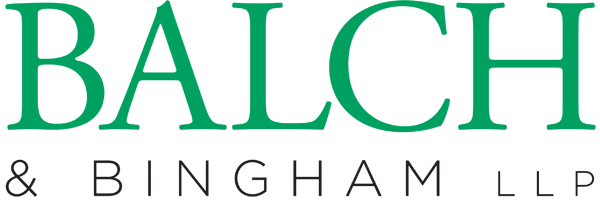Published: March 31, 2020 | Updated: April 3, 2020
The Coronavirus Aid, Relief, and Economic Security Act (the “CARES Act”) was signed into law on March 27 2020. Among (many) other things, it provides for two types of attractive loans for small businesses. This summary, which was updated following the publication of SBA’s Interim Final Rule on April 3, 2020, provides a comparative overview of each type of loan and describes how to apply. This information is not exhaustive but can provide a roadmap for your business in these uncertain times.
EIDL
|
PPP LOAN
|
|
This is an Economic Injury Disaster Loan (SBA 7(b))
|
This is a Paycheck Protection Program Loan (“PPP Loan”) (SBA 7(a))
|
|
|
|
|
Covered period for substantial economic injury: January 31, 2020 through December 31, 2020
|
Covered period for loan: February 15, 2020 through June 30, 2020.
|
|
Loan Proceeds can be used for payroll, working capital, accounts payable, fixed debts, other bills that cannot be paid due to COVID-19 impact
|
Loan Proceeds must be used for payroll costs (including employee salaries*, hourly wages, cash tips, paid sick or medical leave, and group health insurance premiums), and existing interest payments on mortgages, and rent payments, and utility payments. At least 75% of loan proceeds must be used for payroll costs.
*up to an annual rate of pay of $100,000.00
|
|
Loan Proceeds cannot be used for repair physical damage, refinance of debt incurred prior to COVID-19, payments on loans owned by a Federal Agency or a Small Business Investment Company licensed under the Small Business Investment Act, or to generally pay dividends or disbursement to owners, partners, officers or stockholders
|
Loan proceeds cannot be used for payments to independent contractors; prepayment of interest on mortgages or other debt obligations, payment of principal on mortgage or other debt obligations, other business related expenses not listed above (example – inventory).
|
|
Maximum Loan Amount is $2,000,000.00
|
Maximum Loan Amount is lesser of (1) $10,000,000.00 or (2) 250% of average monthly payroll costs.
|
|
Terms: Up to 30 year term, 3.75% interest rate, payments are not due until 12 months after receipt, and interest doesn’t accrue until 12 months after receipt, waives personal guarantee for EIDLs less than $200,000.00, collateral is required on EIDLs greater than $25,000.00 (however EIDL will not be denied simply because collateral is not available).
|
Terms: Two year term, 1% interest rate, no personal guarantee or collateral required, non-recourse but if loan proceeds used for unauthorized purposes, SBA may have recourse against the shareholder, members or partners for such unauthorized uses.
|
|
EIDLs are not forgivable and must be repaid, but at the time of application a business can request an EIDL Emergency Grant which allows for a $10,000.00 advance at the time of application. The Emergency Grant does not have to be repaid, even if the application is denied. If you receive an Emergency Grant and are also approved for a PPP Loan, the amount of the Emergency Grant shall be reduced from the loan forgiveness amount for payroll costs on your PPP Loan. EIDLs taken out prior to April 3, 2020 may be refinanced under PPP Loan.
|
PPP Loans are forgivable. All covered costs (as laid out in the Loan Proceeds section above) during the covered time period (see covered period section above) are forgivable so long as at least 75% of the proceeds were used for payroll costs and none of the loan proceeds were used for unauthorized purposes. Loan forgiveness is not automatic and an application must be submitted to qualify. Accurate and thorough documentation of costs is highly advised in order to increase eligibility for forgiveness. Amounts that are forgiven are not included in gross income and are not taxable.
|
Which loan is right for your business?
These two loans can work hand in hand, with the EIDL covering costs for working capital and fixed assets (with the exceptions listed above), and the PPP Loan covering payroll costs, interest on mortgages, rent, utilities, and interest on other debt obligations. When applying for an EIDL, make sure to clarify that your purpose is for expenses other than those allowed under a PPP Loan on the loan application to remain eligible for both loans.
Here’s how to apply:
To apply for an EIDL: Visit the SBA.gov website -- the top of the page should have a COVID-19 link. In that link you will find information relating to applying for an EIDL.
In order to be prepared to apply for an EIDL, as soon as possible assemble the following types of documents and information:
- Business tax returns for the last three years
- Personal tax returns for the last three years
- Business financial statements
- Personal financial statements
- Business debt schedule
- Monthly sales figures for the last twelve months
To apply for a PPP Loan:You can apply for a PPP Loan at any lending institution that is approved to participate in the program through the existing U.S. Small Business Administration (SBA) 7(a) lending program and additional lenders approved by the Department of Treasury. This could be the bank you already use or a nearby bank. You can call your bank or find SBA-approved lenders in your area through SBA’s online Lender Match Tool, or you can call your local Small Business Development Center and they can provide you with a list of lenders.
In order to be prepared to apply for a PPP Loan, as soon as possible assemble the following types of documents and information:
- Payroll Ledger for the last twelve months
- 2019 IRS Quarterly 940, 941 or 944 payroll tax reports
- Documentation of total health insurance premiums paid in the last twelve months
- Documentation showing the sum of all retirement plan funding
SBA will not require business or personal financial statements for PPP Loan applications.




